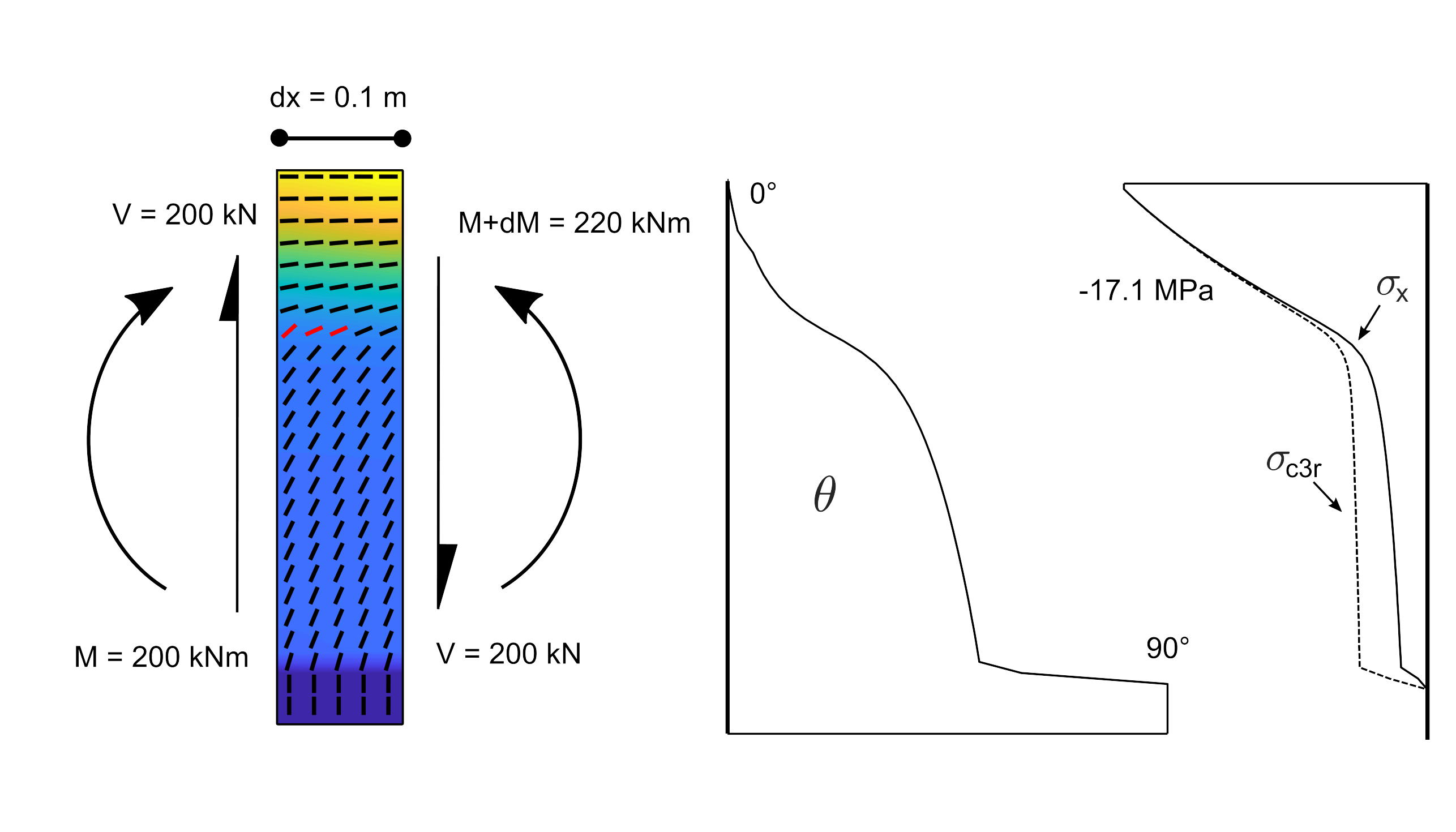Analytical shear response of reinforced concrete beams using cracked membrane model
Author: Andreas Näsbom
Language: English
Abstract
The scope of this thesis is the development of a cross-section analysis tool for reinforced concrete that is able to describe the entire 2D stress – and strain state of a section. The underlying analytical model linking the deformation state of a finite element within the section to its stress state is the Cracked Membrane Model developed by Kaufmann (1998). Phenomena such as concrete softening due to principal tensile strains and strain hardening of the transverse and longitudinal reinforcement can thus be captured. An algorithm is implemented to numerically calculate the shear stress profile for given loads on the lines of the «Response 2000» program developed by Bentz (2000).
The program is able to calculate stably the response of solid and hollow rectangular as well as I/T-shaped sections, though some numerical issues remain especially regarding the pure shear response. With the sectional analysis implemented, an investigation of the response of sections with different shapes and reinforcement contents is carried out, where a special focus is put on the shear stress profile for moderate in contrast to high bending moments. The obtained findings are then compared to state-of-the-art calculation procedures such as proposed by the SIA code. Bending moment – shear force interaction diagrams are derived which show the capability of a reinforced concrete member to sustain shear forces at simultaneously acting bending moments. They show very good accordance to the ones obtained with Response 2000. Furthermore, a beam analysis tool is implemented to calculate the response of simply supported, symmetrically loaded beams. With this, it is possible to observe the 2D load – and deformation state at every point of the beam as well as predicted crack directions.
Comparing a small series of experiments to the numerical simulations shows promising results in terms of load – deformation as well as ultimate load predictions. The latter holds only for stirrup reinforcement with adequate ductility and reinforcement content. Especially for low reinforcement contents, the calculations significantly underestimate the ultimate shear capacity. Adopting the model in order to better describe the actual behaviour of beams will further improve the performance of the model.

